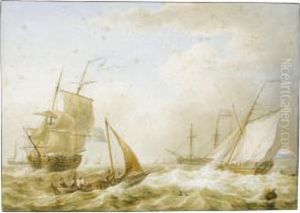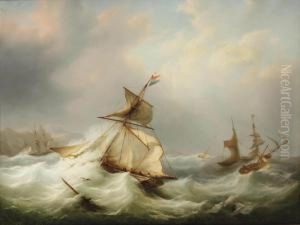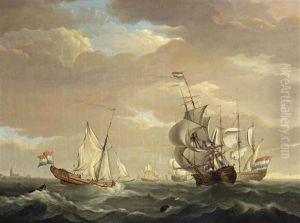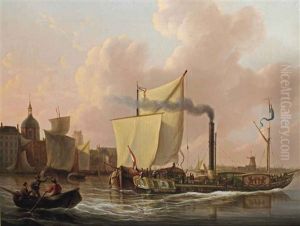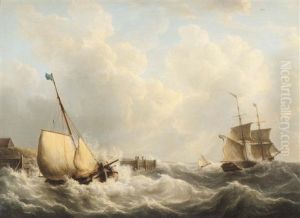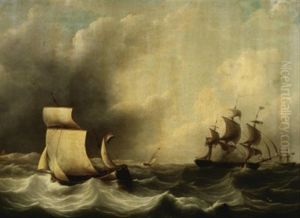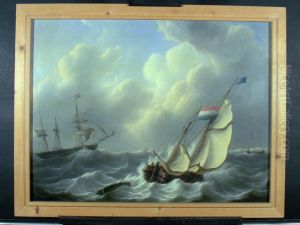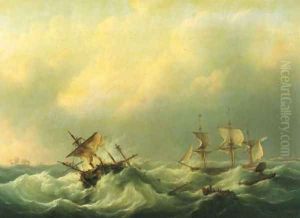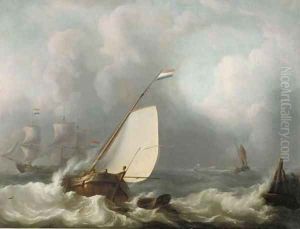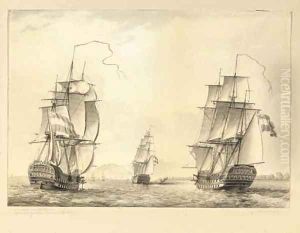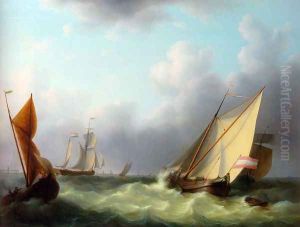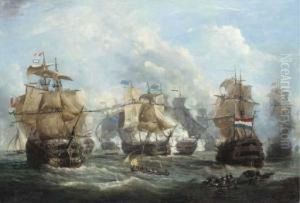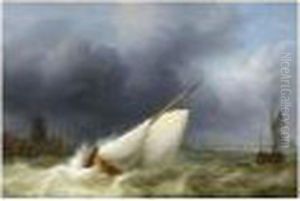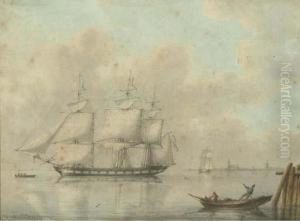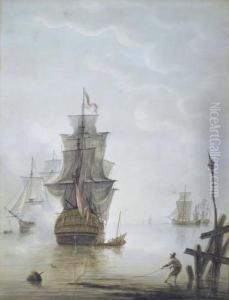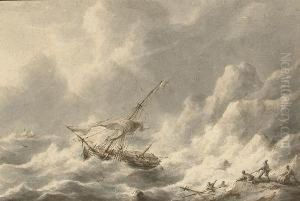Martinus Schouman Paintings
Martinus Schouman was a Dutch painter, watercolourist, and draftsman born on February 28, 1770, in Dordrecht, Netherlands. He is best known for his maritime scenes, capturing the essence of naval battles, shipwrecks, and views of the sea. Schouman's artistic talent was evident from a young age, and he received his initial training from his uncle, Aert Schouman, who was also an accomplished painter.
As a young artist, Martinus Schouman's work was influenced by the 17th-century Dutch maritime painters, and he was particularly inspired by the works of Ludolf Bakhuizen and Willem van de Velde the Younger. He quickly developed his own style, characterized by dramatic compositions and a keen attention to the effects of light and atmosphere on the sea.
Throughout his career, Schouman continued to evolve as an artist, and his paintings often depicted historical events, especially those related to the Dutch naval history. His works were highly regarded for their accuracy in the portrayal of ships and sea conditions, making them valuable both artistically and historically.
Besides maritime subjects, Schouman also painted landscapes, cityscapes, and portraits. However, these works were less prominent in his oeuvre. He was active in various art societies, including the Royal Academy of Fine Arts in Amsterdam, where he was recognized for his contributions to Dutch art.
Martinus Schouman's legacy is preserved in numerous collections, both private and public, including the Rijksmuseum in Amsterdam and the Dordrechts Museum in his hometown. He continued to paint until his death on August 28, 1848, in Zaltbommel, leaving behind a rich body of work that continues to be celebrated for its vivid portrayal of maritime life in the 18th and 19th centuries.






